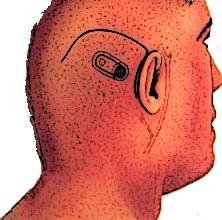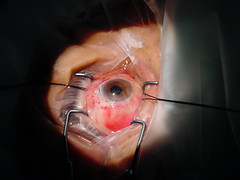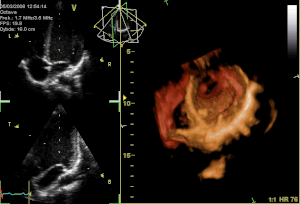Ridley’s implantation (1949) of the first intraocular lens (IOL) marked the beginning of a major change in the practice of ophthalmology. The IOLs are microlenses placed inside the human eye to correct cataracts, nearsightedness, farsightedness, astigmatism, or presbyopia. There are two types of IOLs: anterior chamber lenses,which are placed in the anterior chamber of the eye between the iris and the cornea, and posterior chamber IOLs, which are placed in the posterior chamber behind the iris and rest against the capsular bag. Procedures for implanting the IOLs and technologies for manufacturing them in various sizes, thicknesses, and forms as well as with various materials progressed tremendously in the last decade. Multifocal IOLs are one of the important signs of this progress. While monofocal IOLs, the most commonlyused, are designed to provide clear vision at one focal distance, the design of multiple optic (multifocal) IOLs aims to allow good vision at a range of distances.
As interest in medical electronics soars, there is also growing concern about associated quality, safety, reliability, cost, liability and regulatory issues. India’s Department of Information Technology (DIT) under the Ministry of Communication and Information Technology has instituted a Medical Electronics and Telemedicine Division to address these matters. Given the crucial role that medical electronics plays in health management and diagnostics, DIT has instituted a series of measures to spur growth within this sector and generate awareness about medical electronics technology among healthcare stakeholders. A further goal is encouraging the deployment of indigenously developed medical electronic devices in healthcare centres across the country.
This is a preview of Current Biomedical Research in Medical Instrumentation & Telemedicine in India.
Read the full post (378 words, 1 image, estimated 1:31 mins reading time)

Image via Wikipedia
To enable purchasers to compare commercially available instruments and evaluate new instrument designs, quantitative criteria for the performance of instruments are needed. These criteria must clearly specify how well an instrument measures the desired input and how much the output depends on interfering and modifying inputs. Characteristics of instrument performance are usually subdivided into two classes on the basis of the frequency of the input signals.
Static characteristics describe the performance of instruments for dc or very low frequency inputs. The properties of the output for a wide range of constant inputs demonstrate the quality of the measurement, including nonlinear and statistical effects. Some sensors and instruments, such as piezoelectric devices, respond only to time-varying inputs and have no static characteristics.
Some times, it become essential to monitor physiological events from a distant place.
Some of such situations are:
(a) Monitoring of astronauts during flight.
(b) Monitoring of patients in ambulance while transit to hospital.
(c) Monitoring of patients while obtaining their exercise electrocardiogram.
(d) Monitoring of patients who are permitted to stay away from the hospital.
(e) Monitoring of animals in their natural habitat.
(f) Transmission of ECG or other medical information through telephone links
(g) Isolating the patients from electricity operated measuring equipment such as ECG equipment inorder to prevent any accidental shock to them.

Image via Wikipedia
Advantages of Cochlear Implants
- Can enable one to hear conversation and thus learn spoken language with relative ease, particularly for those with severe-profound hearing loss
- May enable one to use a regular telephone when otherwise not possible
- Avoids problems of acoustic feedback & earmold issues
- Greater ease in high frequency consonant perception, e.gs., /sh/, /s/, /f/, /t/, /k/, /p/, /h/
- Distance hearing is likely better than with hearing aids, although FM systems are still needed in classrooms due to noise factor.
- May be greater potential for incidental learning
This is a preview of Comparison:Advantages & Disadvantages of Cochlear Implant & Hearing Aids.
Read the full post (1053 words, 2 images, estimated 4:13 mins reading time)




